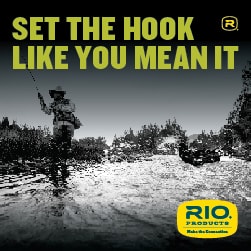State of the Steelhead
 Monday, March 16, 2009 at 2:00AM
Monday, March 16, 2009 at 2:00AM 
To further put the "world record" Hoh steelhead hullabaloo in perspective I would encourage everyone to read Patagonia Fly Fishing Ambassador Dylan Tomine's, State of the Steelhead. Originally appearing in Wild on the Fly, it can now be found in on-line magazine form courtesy of Tim Pask. Balancing the sobering information contained in the article is some photography from Tim and Jeff Bright that beautifully underscores exactly what's at stake.
Dylan Tomine's State of the Steelhead
 El Guapo
El Guapo

A big shout out to the Wild Steelhead Coalition for commissioning Dylan's "State of the Steelhead" article. The WSC is an organization dedicated to increasing the return of wild steelhead to the waters and rivers of the Pacific Northwest.

On May 9th The coalition will be hosting the West Coast film debut of "Rivers of a Lost Coast" along with a special reception with narrator Tom Skerrit and film producers Justin Coupe and Palmer Taylor. LINK
 El Guapo |
El Guapo |  6 Comments |
6 Comments |  Fly Fishing,
Fly Fishing,  conservation,
conservation,  steelhead in
steelhead in  Conservation
Conservation 






Reader Comments (6)
Great Essay. Really puts things into perspective.
I like how the author thinks we are fishing for crumbs in the situk, first the two estimates reffered too are kind of shady scientifically, second they were made before the intensive fishery where most fish get caught multiple times, this of course greatly increases spawning mortality an when you count fish going downstream if the spawning (and C&R) mortality goes from 10% to 50% it accounts for the change in numbers or kelts, yes the situk was overfished, but it seems to be recovering and quite frankly 1000 fish per mile is pretty nuts, thats more O. mykiss than most streams in this state, and the situk has residents, dollies, and salmon that spawn in the same 13 miles of stream. Also the runs of steelhead in the situk is primarily a spring run not a winter run although ~40% are summer fall and winter fish the bulk of the run enters in late april and may.
Using bad science to "prove" a point is really stupid because it opens those of us who care to criticism very easily. We should look to this state for what can go right in fisheries management and perhaps use the lessons we have learned from the down fall of WA OR and CA salmon and steelhead and the downfall and recovery of Alaska's stocks and use that to formulate further actions, I'll give you a hint, it involves habitat.
Great article. Just tragic. The math behind hatchery fishing is astounding, too. I'm constantly amazed at how little folks realize about the impact of their choices. My personal thing is not creating market demand for fish other than wild Alaskan salmon (rarely) or talapia. The tuna fishery is in as bad a condition as the steelhead fishery; and it has much more market demand for the product. I lived in WA for almost three years and never caught a steelie until I fished NY tribs after moving back East.
The Science is not only valid, but indisputable over all. I can't speak to your specific response here, but you would have us repaint the current "State of the Steelhead" with a the tiniest of brushes. The hardcore reality is that the Steelhead is not only declining, but the speed is increasing on almost every front.
Of all the places I fish I would say that Alaska still produces more consistently then other places, and perhaps the lessons we have all learned will help save the existing resources you have, but make no mistake the VAST majority of our great steelhead rivers are a shell of their past. And if you don't believe, head up to the Skagit where success is measured by PULLS PER WEEK, verses hooked fish. BLEAK
TP
Great article!
Should be mandatory reading for every Sportsman on the West Coast!
"Nature doesn't operate according to Computer Models or Statistics"
The Natural System that these fish are a part of works just fine WITHOUT any "help" from us. Humans would be far better off taking a "stewardship" role, after all, it was here long before we showed up...a gift some would argue......worked just fine...no problems.
Change is good, and it should happen for all fishery systems, Steel included.
It's '09 people, let's get with the program..........but sadly, there is still to much of the old "kill all the fish here, then move to the next planet" attitude around.
Thanks all for your responses and kind words. My main goal in writing this piece was to inspire anglers to action by demonstrating just how bad it's become. Also, to show how our "shifting baselines" can give us a false sense of health in our fisheries, when in reality, even what we consider "decent" or "good" fishing is, in many cases, a mere fraction of what it was and should be.
AKPM, your response illustrates this perfectly. While I agree with you that a thousand fish per mile provides some very good angling, the fact is, fifty years ago there were more than twice as many. If nature shows us that two thousand fish per mile is the natural carrying capacity of that river, than I would argue that even in this great fishery, we are still fishing for crumbs. A lot more crumbs than what we have in other rivers, but still, a 50% loss of a run is reason for serious concern. At least in my opinion.
As for "shady" numbers and "bad science," I can only respond that the numbers I quote in the article were provided by some of the foremost and will-respected scientists working in the field. My main sources are papers published by the Wild Salmon Center, The Wild Fish Conservancy, NOAA and the Independent Economic Analysis Board of the Northwest Power and Conservation Council. I don't think there are many out there other than those who represent resource extraction corporations or developers who would classify any of these groups as "shady."
Again, thanks everyone for your comments and thoughts. Keep the ball rolling.
Dylan